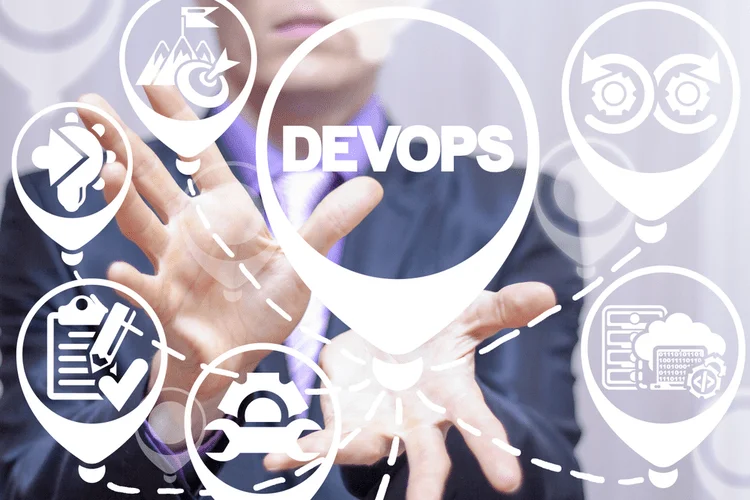Despite frequent code commits, bugs are resolved on each quick and longer time frames. There are totally different strategies to manage what features are ready for deployment to manufacturing and can be made public for the customers. A new model of declarative configuration in the repo triggers a steady integration (CI) course of that builds new artifacts, usually container pictures.

Taken together, this set of practices is also known as CI/CD Pipeline. The key element of the CI/CD pipeline is the usage of automation to deliver larger high quality ci cd pipeline code, at a faster tempo. The automated pipeline removes guide errors, facilitates standardized feedback loops, and permits quick iterations.
CI/CD services get rid of time-consuming, repetitive, error-prone processes, with automated workflows. According to a survey, greater than 80% of salesforce professionals already use CI/CD companies or are strategizing its adoption in close https://www.globalcloudteam.com/ to future. Working in the CI/CD pipeline necessitates the following best practices throughout the entire course of chain.
How A Ci/cd Pipeline Can Profit Your Devops Staff And Group
Using automation within the CI/CD pipeline helps cut back the number of errors that may happen in the many repetitive steps of CI and CD. It additionally helps free up developer’s time, enabling them to focus extra on product growth as there aren’t as many code adjustments to repair down the street if the error is caught shortly. CI and CD are two DevOps greatest practices as they deal with the misalignment between builders and operational team.
- Continuous integration signifies that every change developers make to their code is straight away integrated into the principle department of their software program project.
- You can considerably benefit by identifying and mitigating risks in the early stage of the event cycle through the continuous integration and steady deployment.
- All other exams like static code analysis, safety testing, API testing etc. may also be automated.
All adjustments to inside processes need to be made following pipeline standards and insurance policies. Any failure would prohibit the process from progressing to the subsequent degree unless the issue is resolved. If a new safety feature is required, your team can use CI/CD and automated testing to introduce the fix to production systems quicker and with larger assurance.
As the business continues to develop, the CI/CD tools must scale simply as fast to fulfill new calls for. A powerful device is the one that’s programmable and relevant to the present growth workflows. Plus, the CI/CD configuration must be stored as codes that enable reviewing, versioning, and restoring for future uses. One of one of the best practices I at all times practiced as a developer and fostered is maintaining strong CI and CD pipelines. If the combination fails, the damaged construct becomes the very best precedence to repair.
The Hype Behind Low Code No Code Platforms
Containerization is a great technique to test the code in a production environment to test solely the realm that might be affected by the discharge. Before DevOps and CI/CD gained traction in software program growth, development groups would know there was an issue with code, however would struggle to know precisely where the issue was occurring. Developers can easily identify after which isolate code faults, dramatically enhancing productivity. Traditional CI/CD pipelines typically require a quantity of sources, elements, and processes. Once a pipeline is up and operating, it should have a secure model to run all the processes.
The higher the MTTR, the extra productively the DevOps teams can work, and the quicker software program could be delivered. CI/CD repeatedly merges codes and continuously deploys them to production after thorough testing, maintaining the code in a release-ready state. It’s necessary to have as part of deployment a manufacturing environment arrange that carefully mimics that which end-users will ultimately be using.
On the other hand, the CD begins where CI ends to make sure that the code adjustments are automatically pushed to the selected infrastructure environments. During the supply and construct levels, perform SCA, SAST and other primary code scans for style and security standards. When the build is accomplished, apply a battery of established check conditions using test instruments. Start with easy functional validation, and systematically broaden testing to extra complex and comprehensive integration, in-depth security (such as DAST) and performance.
By comparability, continuous supply sometimes just stages the validated build for guide deployment or different human authorization. Continuous integration (CI) focuses on the early phases of a software program growth pipeline where the code is constructed and undergoes preliminary testing. Multiple developers work on the same codebase concurrently and make frequent commits to the code repository. Build frequency may be every day and even a quantity of times per day at some factors within the project’s lifecycle. These small, frequent builds enable easy and low-risk experimentation, in addition to the ability to simply roll again or abandon undesirable outcomes. The first step towards steady integration is configuring the version management system.
Infrastructure as code transforms infrastructure configurations into editable code that is compiled and deployed as services. This idea can apply to continuous software program improvement and supply as properly. With pipeline as code, a company describes CI/CD pipeline stages or steps on templates files, stored on a repository and handled in the same means as supply code. In addition to automation, there’s a cultural part in successful CI/CD practices, too. Instead of shipping giant code modifications that may take time to combine and take a look at with the code base, a CI/CD practice encourages builders to commit smaller adjustments more usually versus waiting for one release. This helps software groups ship iterative updates sooner since smaller code modifications are simpler to integrate, check and deploy in comparability with larger updates.
Steady Deployment (cd)
Container pictures can define the development surroundings, testing or staging surroundings, and manufacturing surroundings. The same container picture with slight differences could be promoted all through the pipeline, enabling consistency in improvement and testing. In a CI/CD process, containers can be utilized to deploy a construct to every stage of the pipeline.
What used to take weeks or months to finish can now be completed in days and even hours. You can check and deploy code more incessantly utilizing a CI/CD pipeline, giving QA engineers the power to identify and repair errors as quickly as they happen. CI/CD refers to a pipeline the place you’ll find a way to submit new code on one end, let it get tested through phases similar to sourcing, building, staging, and production, after which finally launch it as a ready-for-production code. CI/CD brings pace and agility, so give the method time to evolve and allow developers to strive completely different instruments and steps.
Continuous supply (CD) goals to solve these challenges with automation. In a CD method, software is packaged and deployed to production as often as potential. A core precept of CD is that every change to the software program can be deployed to production with no particular effort. A good CI/CD pipeline needs to cowl as many as attainable all of the aspects of a seamless software program supply process. It takes just one part left uncovered in the CI/CD tools to considerably impacts the entire pipeline chain. As talked about above, the need for CI/CD infrastructure to function and scale accordingly to the rising pace of the product team is high.
They help in developing a tailor-made CI/CD strategy, selecting the best tools, and implementing the required automation and greatest practices to streamline your software program supply processes. Their experience and guidance enable organisations to realize quicker time-to-market, improved software program high quality, and elevated effectivity within the CI/CD pipeline. The automation check section will carry out the final exams to qualify the constructed options earlier than they’re deployed to production. Automated and steady testing is applied in this part to utilize the builds and make sure there aren’t any bugs remaining. The CI/CD pipeline offers a workflow that enables builders to integrate their codes extra incessantly and share with team members to keep away from attainable conflicts in future builds.
If every thing goes nicely then the pipeline will deploy the code to the production-like surroundings. Since the build, deployment, and environment are all tested collectively, the resulted code is deployable to the manufacturing surroundings. The CI/CD pipeline is among the fundamental practices for DevOps implementation and it bridges the gap between development and operations groups.

The capability to improve operational and manufacturing capabilities is increased by incorporating such a method into the infrastructure. With altering growth technologies and consumer preferences, there was an increase in demand for sooner innovation, early product improvement, and quicker releases to the market. Different sections of the SDLC must velocity up their respective supply processes to satisfy deadlines.
More On Devops
This part permits developers to simulate the product in a production-equivalent setting to examine see the product features. A well-functioning CI/CD process is a productive answer to hurry up the deployment tempo and make each launch extra valuable to the end-users. It streamlines the deployment cycle by enabling constant communication between teams and utilizing automated processes. CI/CD provides freedom to the builders to fail fast and recover faster. If any problem arises, they will roll again the code, modify it, and once more push it for production within no time. CI/CD merges these changes into the central repository and deploys it additional for testing.